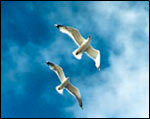Geographical situation
The Republic of Sakha (Yakutia) occupies most of the Northeastern part of the Asian continent. It extends 2000 kilometers from north to south and 2500 kilometers from east to west. It occupies an area of 3 103 200 square kilometers forming 1/5 of the territory of Russia. The territory of Yakutia is larger then the territories of France, Austria, Germany, Italy, Sweden, UK, Finland, and Greece put together.
The Novosibirskie Ostrova and some other Arctic islands are part of the territory of the Republic. More then 40 per cent of the territory is above the Arctic Circle. There are three time zones – six, seven, and eight hours ahead of Moscow. The capital of the Republic – Yakutsk – is 6875 kilometers from Moscow and 1814 kilometers from Vladivostok. The difference between Yakutsk and Greenwich time is 8 hours.
See map of Yakutia
Climate
| Expedition to the Pole of Cold, Oymyakon was ranked by journal “GEO” December 2007 as one of 50 most exotic trips of the world. | Yakutia is rich in natural contrasts. The climate is sharply continental with a range in temperature of 100(C from +40(C in the summer to -60(C in the winter. The Pole of Cold (the absolute coldest point of the Northern Hemisphere) is situated in Oimyakonsky uluss where a record negative temperature of -71.2 ° C was recorded in 1926. |
Winter in Yakutia is continuously cold but with little snow accumulation, while the summer is short and dry with high temperatures prevailing through most of the territory during this time. Also the Air is fresh and clean.
During winter, the low altitude of the Sun determines a short day over most of the territory of Yakutia. The Polar Nights begin on the territory which is above the Arctic Circle. The Sun seems to forget about that area. Darkness and twilight take charge for several months. Some nights are lit up by the Aurora Borealis, the natural phenomenon that can only be observed along the latitudes occupied by this territory. Due to the comparatively high altitude of the Sun, and the dryness and clarity of the air, summers are mostly sunny; the Polar Days begin. A day can last up to 20 hours along the latitude of Yakutsk, while farther North, the Sun never drops below the horizon.
Landscape
 The Laptev Sea and the East Siberian Sea wash the Northern shores of Yakutia. Nine to ten months a year the seas are covered with a 1.5 to 2 meter-thick ice crust. There are vast numbers of lakes and rivers of which the Lena river is the most beautiful. It is one of the ten greatest rivers on the planet. Besides the Lena river, the Indigirka, Yana, and Kolyma rivers are some of the largest in Yakutia. There are hundreds of glaciers and ice crusts. The largest ice crust in the world is located in Yakutia. Its name is Ulakhan Taryn. The potency of the ice and its dimensions concede only to the Fedchenko glacier on the Pamirs.
The Laptev Sea and the East Siberian Sea wash the Northern shores of Yakutia. Nine to ten months a year the seas are covered with a 1.5 to 2 meter-thick ice crust. There are vast numbers of lakes and rivers of which the Lena river is the most beautiful. It is one of the ten greatest rivers on the planet. Besides the Lena river, the Indigirka, Yana, and Kolyma rivers are some of the largest in Yakutia. There are hundreds of glaciers and ice crusts. The largest ice crust in the world is located in Yakutia. Its name is Ulakhan Taryn. The potency of the ice and its dimensions concede only to the Fedchenko glacier on the Pamirs.
Almost the entire territory of Yakutia is located in the continuous permafrost zone. During the summer the upper layer of soil thaws to a depth of about 3.5 meters. Numerous well-preserved remnants of pre-historic giant animals have been found in Yakutia. The Berelekh burial site is unique; the remnants of 150 mammoths have been found here. The largest permafrost area in the world of 1500 meters lies in the Western part of Yakutia. The phenomenon of permafrost is studied at the Permafrost Institute and its sub-terrain laboratory, here in Yakutsk.
72 per cent of the territory is covered with taiga. The rest is forest-tundra, tundra, and arctic semi-desert. Two thirds of the territory is mountainous with a typical Alpine landscape. Large mountain systems prevail in the Eastern part of Yakutia. These are the Verkhoyansky range and the Chersky range, where Peak Pobeda is location, the highest mountain of Yakutia, at 3147 meters.
Flora and fauna
 Yakutia is on of the rare places on Earth where the purity of nature and a correspondingly amazing variety of flora and fauna are left untouched.
Yakutia is on of the rare places on Earth where the purity of nature and a correspondingly amazing variety of flora and fauna are left untouched.
The northern tundra is covered with moss and reindeer moss. It is a region of tundra birch that can easily fit in the palm of one’s hand. In the taiga, there are pine, spruce, larch, cedar, aspen, and birch trees. The northern flowers are bright and intensely colored.
The northern berries are rich in taste. Lilium pensylvanicum is a favorite flower of the people of Yakutia. It is called sardaana and grows only in Yakutia. Rhodiola rosea, Aconogonom amgense, Krascheninnikovia lenensis, Redowskia sophiifolia, Oxytropis scheludjakovae, are also endemic.
The inhabitants of the vast lands of Yakutia – moos, fox, sable, wolverine, brown bear, polar bear, walrus, Manchurian deer, northern deer, musk deer, and bighorn sheep – live freely. Numerous rivers and lakes are rich with fish, omul (coregonus autumnalis), chir (coregonus nasus), muksun (c. muksun), white salmon nelma (stenodus lencichthys nelma), sturgeon (acipenser baeri), taimen (hucho taimen), and karas (c. carassius) to name but a few.
 There are about 250 avian species in Yakutia. The tundra is a habitat for rare birds, sterkh (Siberian white crane), sandhill crane, loon, Ross’s goose, golden eagle, white-tailed eagle, etc. The Arctic shore is famous for the noisy and spectacular seashore bird colonies. Yakutia is the only place on the planet with Siberian black crane and Ross’s gull habitats.
There are about 250 avian species in Yakutia. The tundra is a habitat for rare birds, sterkh (Siberian white crane), sandhill crane, loon, Ross’s goose, golden eagle, white-tailed eagle, etc. The Arctic shore is famous for the noisy and spectacular seashore bird colonies. Yakutia is the only place on the planet with Siberian black crane and Ross’s gull habitats.
Specially protected nature territories of Yakutia
The Ytyk Kere Sirder network of specially protected nature territories has been under development since 1994. At present 26 unique lakes have become the common property of the people. There are 4 national nature parks, 38 resource reserves, 38 reserved territories forming a total area of 53427 acres. This is 17.1 percent of the entire territory of the republic.
